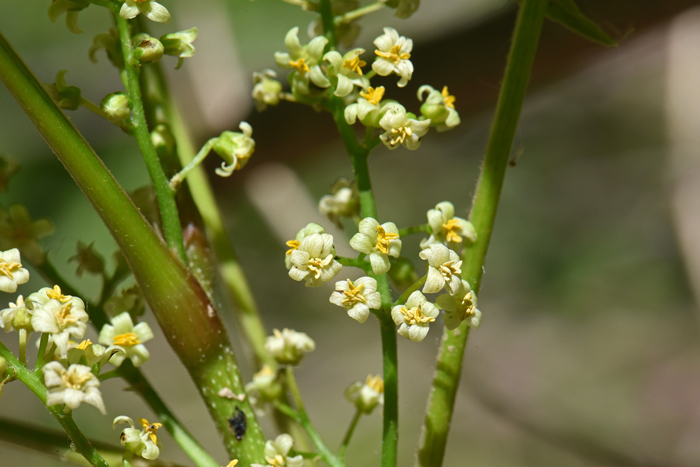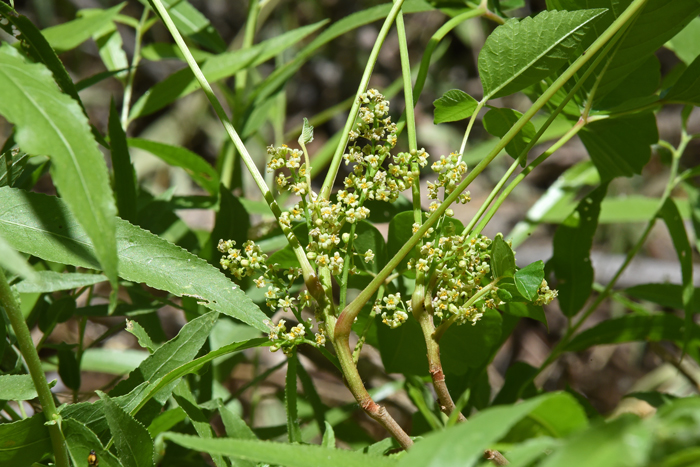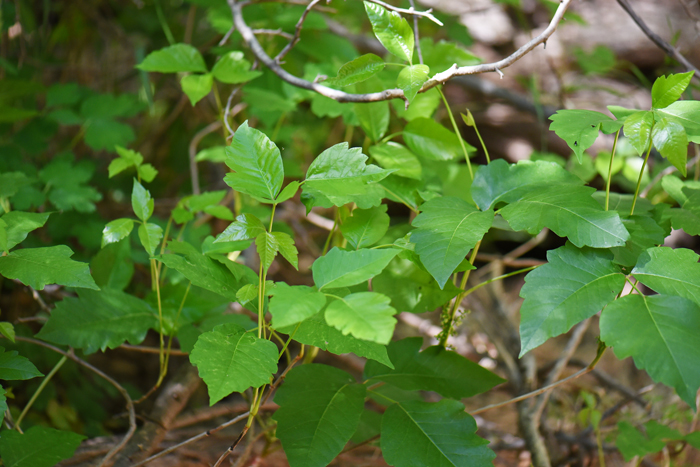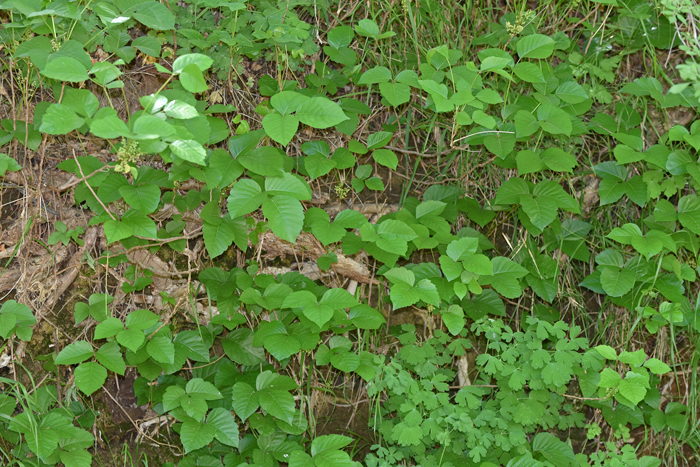Toxicodendron rydbergii, Western Poison Ivy




Scientific Name: Toxicodendron rydbergii
Common Name: Western Poison Ivy
Also Called: Poison Ivy, Poison Oak
Family: Anacardiaceae, Sumac Family
Synonyms: (Rhus radicans var. rydbergii, Rhus toxicodendron radicans var. vulgaris, Toxicodendron crenatum, Toxicodendron desertorum, Toxicodendron radicans, Toxicodendron volubile)
Status: Native
Duration: Perennial
Size: Up to 3½ inches (8.9 cm) or so depending on growth form below.
Growth Form: Forb/herb, shrub, subshrub, vine; plants finely pubescent or nearly hairless; stems erect, ascending or climbing by areole rootlets.
Leaves: Green, shiny green, deciduous trifoliolate or trifoliate, middle leaflet long stalked (petiole); leaflets up to 4 inches (10 cm) long, oblong-lanceolate to ovate, often coarsely few-toothed.
Flower Color: White, greenish-white; inflorescence loose; paniculate, appearing after leaves develop; petals greenish-white.
Flowering Season: 3,000 to 8,000 feet (914-2,438 m).
Elevation: April to September
Habitat Preferences: In Arizona Western Poison Ivy is common in rich soil in ravines and canyons. In general, in the western United States, Western Poison-ivy most often occurs, but is seldom predominant, in gallery forests and floodplain communities.
Recorded Range: Wester Poison Ivy is found over most of North America, absent in several southeastern states and California.
North America & US County Distribution Map for Toxicodendron rydbergii.
U.S. Weed Information: In North America Toxicodendron rydbergii, Western Poison Ivy, can be weedy or invasive according to the following authoritative sources: Weeds of Nebraska and the Great Plains. Plants included here may become weedy or invasive.
Invasive/Noxious Weed Information: No information available.
Wetland Indicator: In North America Toxicodendron rydbergii has the following wetland designations:
Arid West, FACU;
Atlantic and Gulf Coastal Plain, FAC;
Eastern Mountains and Piedmont, FAC;
Great Plains, FACU; Midwest, FAC;
Northcentral & Northeast, FAC;
Western Mountains, Valleys, and Coast FACU.
FACU = Facultative Upland, usually occur in non-wetlands, but may occur in wetlands
FAC = Facultative, occur in wetlands and non-wetlands.
Threatened/Endangered Information: In North America Toxicodendron rydbergii, Northern Poison-ivy, is listed as "Endangered" by the state of Ohio.
In the Southwestern United States: Arizona and Nevada each have 2 species of genus Toxicodendron, California, Utah and New Mexico each have 1 species and Texas has 4 species. All data is approximate and subject to taxonomic changes.
Comments: Western Poison Ivy is found throughout much of the United States and Canada and Western Poison Ivy, at least in its preferred western habitats, is not a predominant species. However Poison-ivies in the eastern United States, and certainly Eastern Poison Ivy, are most often predominant species where they are found.
Toxicodendron rydbergii contains a chemical that in some people causes painful swelling, rashes and eruptions of the outer-skin, thus the common name "Poison Ivy".
Mammals such as bears, mule deer, white-tailed deer, moose, foxes, woodchucks, muskrats, rabbits, squirrels, woodrats and mice consume the leaves, stems, and fruits of poison-ivies.
Livestock typically browse poison-ivies only sparsely however, heavy livestock usage may occur and may reduce the local abundance of the species.
Several species of birds, including gallinaceous birds such as wild turkeys, northern bobwhites, ruffed grouse and sharp-tailed grouse eat the fruits and seeds.
The species epithet "rydbergii" is named in honor of Per Axel Rydberg (1860-1931). Mr. Rydbergii wrote the first book on the flora of the Rockies from Canada to Mexico, among other floras.
See complete listing of ethno-botanical uses at Native American Ethnobotany, University of Michigan, Dearborn.

